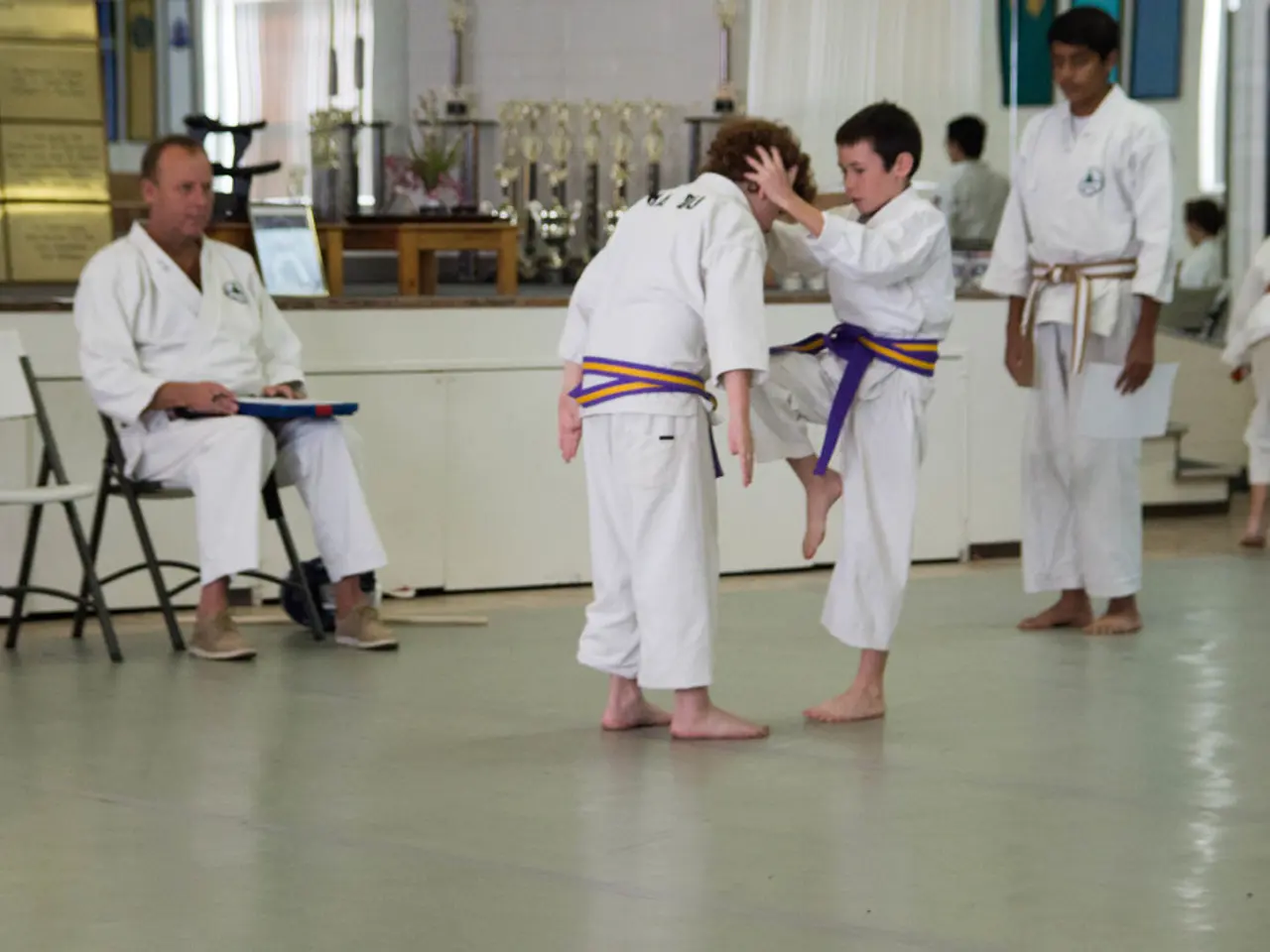Exploration of Ambidexterity: Unraveling the Benefits of Simultaneous Hand Coordination
=================================================================================================
In the realm of human abilities, ambidexterity stands out as a unique trait, exhibited by only about 1% of the population. This rare ability, where an individual can use both hands with equal proficiency, is not just a party trick but a testament to the intricate workings of the human brain.
Scientific Factors:
Ambidexterity is closely linked to brain lateralization, a phenomenon that sees one hemisphere of the brain becoming dominant in controlling specific functions. Ambidextrous individuals, however, may have a more symmetrical or less specialized hemispheric brain function. This altered brain organization can influence motor control and cognitive processing abilities.
Studies suggest that balanced use of both hands involves neural mechanisms that allow for both exploitative and exploratory behaviors, similar to "ambidextrous innovation" discussed in organizational science, which helps resilience and adaptability in dynamic environments.
Cognitive Factors:
From a cognitive perspective, ambidexterity may involve enhanced cognitive diversity and flexibility—abilities to switch between tasks and adapt to new situations efficiently. This cognitive underpinning can promote innovative work behavior and adaptive performance.
However, ambidexterity at the personal level can also bring challenges such as less dominance or mastery in any one hand, leading to potential performance inconsistencies.
Genetic Factors:
Genetic influences on ambidexterity are less clearly defined, but are thought to involve multiple genes affecting brain asymmetry, motor skills, and cognitive traits. While specific genes have not been conclusively identified, broader genetic research indicates lateral preferences have heritable components that can influence hand use and associated neurological traits.
Impact on Performance and Challenges:
Ambidextrous individuals may benefit from enhanced adaptability, creativity, and resilience due to their ability to engage different cognitive strategies and motor skills efficiently across hands. However, they may also exhibit greater cognitive flexibility but sometimes face challenges such as decreased hand specialization, which can affect fine motor skills or lead to coordination difficulties.
Psychological factors like positive thinking and supportive environments enhance adaptive performance, indicating that to maximize the benefits of ambidexterity, social and organizational support plays a critical role.
Activities like writing, drawing, or performing fine motor tasks with the non-dominant hand have been shown to enhance creativity, problem-solving, and memory. The brain's ability to coordinate bilateral hand use is a marvel of neural engineering.
In conclusion, ambidexterity involves a complex interplay of brain lateralization patterns, cognitive flexibility, and genetic predispositions. This leads to advantages in adaptability and innovation but also presents challenges related to motor skill specialization and performance consistency. Supportive psychological and organizational contexts can help ambidextrous individuals harness their cognitive and motor potential effectively.
Historically, left-handedness and ambidexterity were stigmatized, with children often forced to conform to right-handed norms. Today, however, the understanding and appreciation of ambidexterity are growing, particularly in fields like sports, arts, and even education and rehabilitation. The future of ambidexterity may include applications in these areas, potentially improving learning outcomes and helping stroke patients regain motor function.
References:
[1] Corballis, M. C. (2009). Left-handedness, ambidexterity, and creativity. Current Directions in Psychological Science, 18(6), 304-308.
[2] Hülsdünker, F., & Bäumler, R. (2014). Ambidexterity and creativity in organizations. Journal of Management, 40(5), 1224-1246.
[3] Kaufman, J. C. (2015). Ambidexterity and the creative brain. Journal of Creative Behavior, 49(4), 235-242.
- The cognitive underpinnings of ambidexterity, such as enhanced cognitive diversity and flexibility, can promote innovative work behavior and adaptive performance in health-and-wellness, fitness-and-exercise, and education domains.
- In the realm of sports, ambidexterity, like the ability to use both hands equally, can provide an advantage by enabling athletes to adapt to unpredictable situations more effectively, thereby enhancing their resilience and adaptability.
- Recent research in organizational science suggests that the balance in hand usage among ambidextrous individuals may also influence cultural aspects, allowing for the exploitation and exploration of various ideas, leading to increased creativity and innovation.
- The genetic influences on ambidexterity may eventually help science better understand lateral preferences and neurological traits, potentially leading to significant breakthroughs in the treatment of neurological conditions and facilitating learning processes in science and education settings.




